The Skeletal System
The Skeletal System
This lesson introduces the anatomy and functions of the skeletal system. This lesson also explores how bone forms, remodels, and constantly changes as a person grows.
The following video will provide a review on the Skeletal System.
Skeletal System Overview
A human is born with roughly 270 bones. As a person grows, this number decreases to approximately 206. This is because many of the bones fuse.
For Example
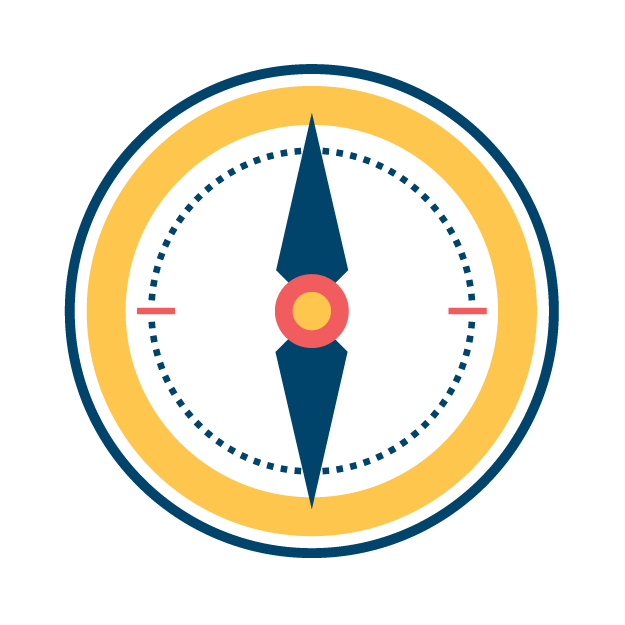
Half of the pelvic bone has three separate bones at birth: the ilium, ischium, and pubis. By adulthood, these bones fuse into one bone called the hipbone.
Anatomically, the skeletal system is divided into two major divisions: axial skeleton and appendicular skeleton. The axial skeleton consists of the bones of the skull, sternum, vertebral column, and ribcage. The appendicular skeleton comprises the bones of the upper and lower extremities and the associated girdles that connect the extremities to the vertebral column. The following table summarizes the number of bones found in each skeletal division.
Twenty-four of the bones in the vertebral column are called the pre-sacral vertebrae. These consist of 7 cervical, 12 thoracic, and 5 lumbar vertebrae. The last two bones of the vertebral column are the sacrum and coccyx.
| Axial | 80 bones |
| Inner ear ossicles | 6 |
| Skull and Hyoid | 23 |
| Sternum and Ribs | 25 |
| Vertebral Column | 26 |
| Appendicular | 126 bones |
| Pectoral Girdle | 4 |
| Upper Extremities | 60 |
| Pelvic Girdle | 2 |
| Lower Extremities | 60 |
The skeletal system consists of bones, cartilage, and ligaments that are tightly bound together to form a strong, yet flexible, framework. Bone is an active form of connective tissue. This tissue plays a role in many of the functions of the skeletal system:
- Support: Bones and cartilage support body posture because both structures are rigid. They also allow a person to remain upright and provide a framework to which soft tissues like muscles and organs can attach.
- Movement: Bones of the skeletal system interact with the muscular system to help the body move. Bones themselves cannot move. But when connected to each other by ligaments, along with the action of muscles, a human body can move.
- Protection: The skeletal system protects vital organs from external damage. The skull protects the brain, the vertebral column protects the spinal cord, and the sternum and ribcage protect the lungs.
- Mineral storage: Bone functions as a storage site for important minerals like calcium and phosphorus. These minerals are used for a variety of physiological functions in the body.
- Hematopoiesis: This is the process bones use to produce red blood cells and stem cells, which differentiate to a variety of different cell types in the body.
The following image illustrates the anatomy of the skeletal system.
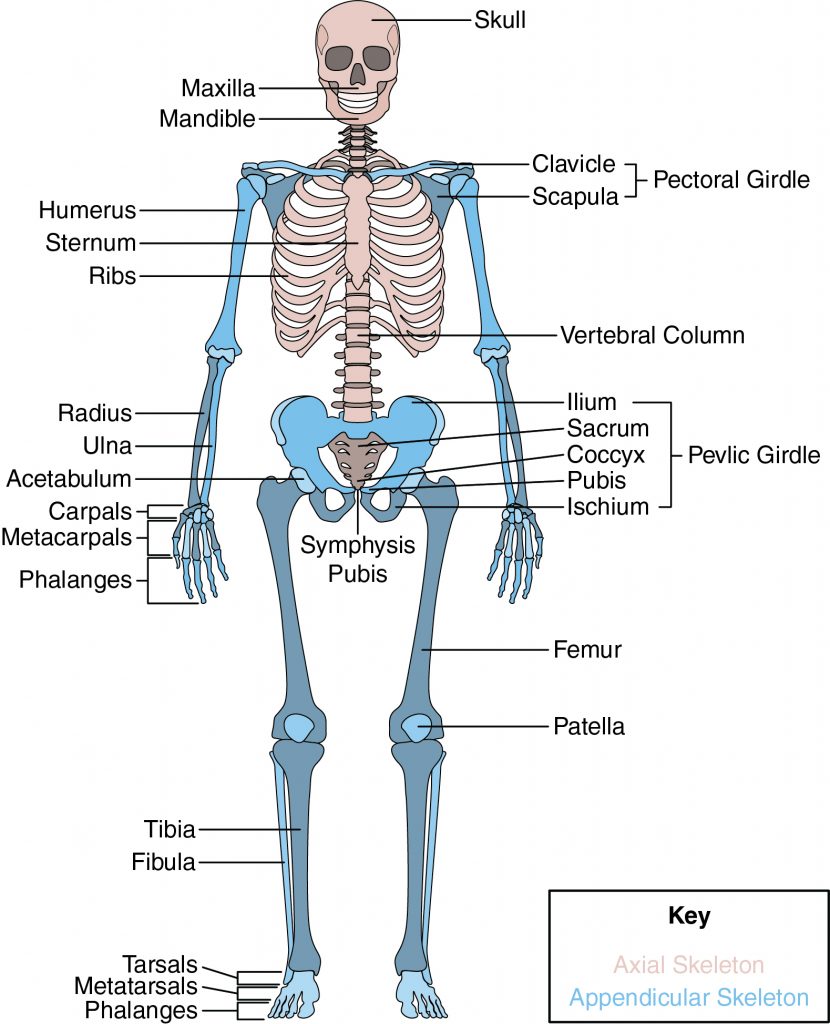
Bone Shape and Structure
The overall structure of bone consists of an outer shell called compact bone. It encloses another type of bone tissue that is loosely organized called spongy or cancellous bone. Compact bone is made of units called osteons. These structures look like cylinders. They contain a mineral matrix and living bone cells. Each osteon also contains a Haversian canal that houses the bone’s blood vessels and nerve fibers.
Surrounding the compact bone is a fibrous membrane called the periosteum. This consists of blood vessels, nerves, and lymphatic vessels that nourish the compact bone.
There are five types of bones in the human body: long, short, flat, irregular, and sesamoid. The following table details the characteristics of each and where they are found.
Keep In Mind
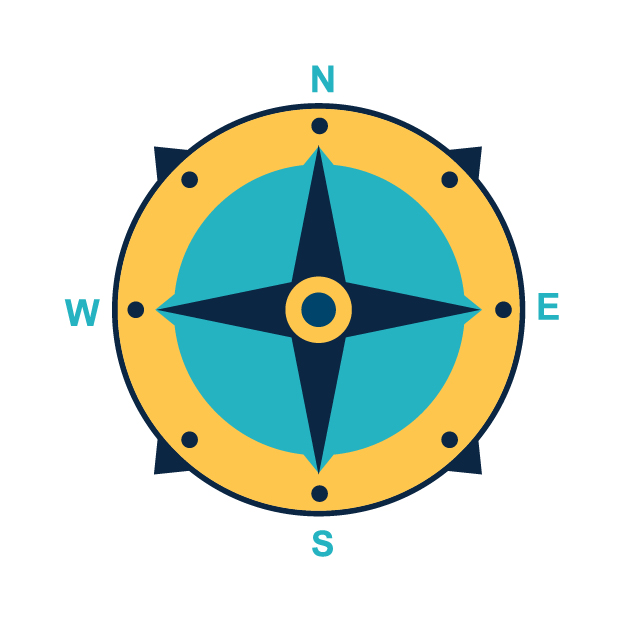
As the name implies, spongy bone is lighter and less dense than compact bone. It is spongy because it consists of open sections called pores. Viewed under a microscope, these sections look like a kitchen sponge.
| Bone type | Appearance | Function | Example |
| Long | Elongated bones; longer than they are wide | Mechanical strength | Femur, tibia, clavicle, humerus, and metacarpals |
| Flat | Broad bones that are thin | Site of muscle attachment; provide protection | Scapula, hip bone (os coxa), sternum, nasal bone, and occipital/ parietal/frontal bones of the skull |
| Irregular | Have a non-uniform shape that cannot be classified as any other bone type | Mechanical support for the body | Vertebrae |
| Sesamoid | Small bones | Mechanical support; provide protection | Patella (kneecap) |
| Short | About same width as length | Provide support; little movement | Carpal and tarsal bones of the wrist and feet |
To visualize the anatomy of all bone types, it is helpful to view the anatomy of long bone. As shown in the following image, the long bone consists of three major sections: proximal epiphysis, diaphysis, and distal epiphysis.
- Epiphysis: This is found at each end of the long bone. It consists primarily of spongy bone with a thin layer of compact bone. Bone growth occurs at the epiphysis.
- Articular cartilage: This covers the epiphysis. It decreases frictions at the joints.
- Diaphysis: This is the longest part of the long bone. It consists primarily of compact bone.
- Medullary cavity: This is found inside the long bone. It is composed of red and yellow bone marrow. Red marrow is where hematopoiesis occurs. Yellow marrow consists primarily of fat cells.
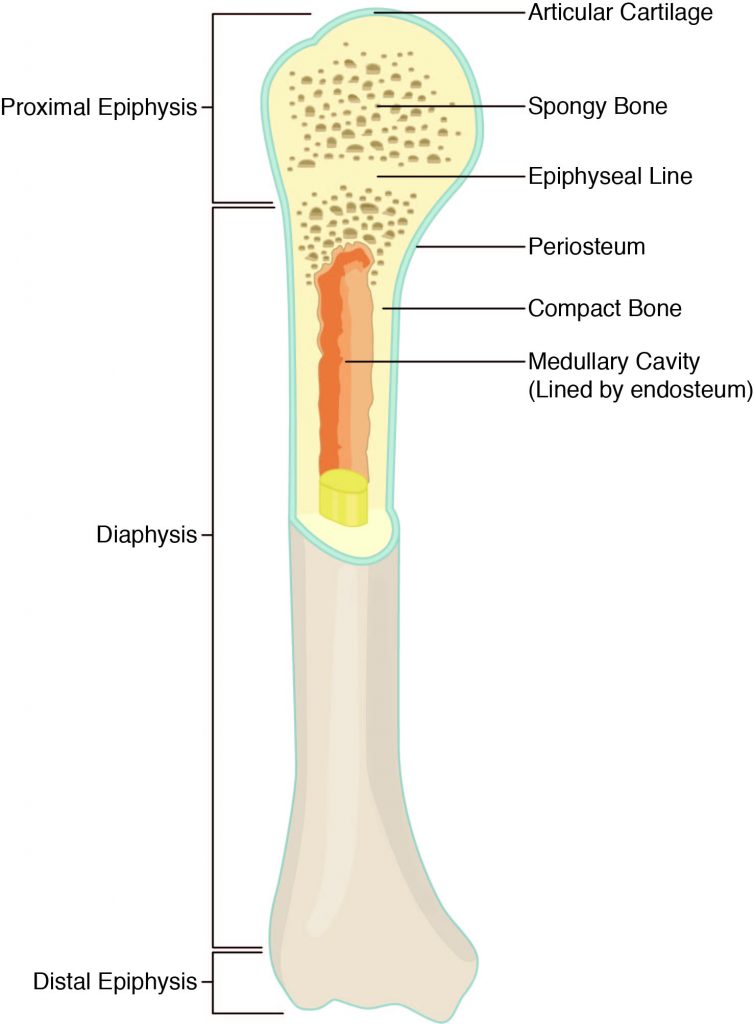
Ossification and Bone Remodeling
Although bone is a hard structure, it can grow. This is especially important in childhood. Ossification is the process of bone formation that occurs first during embryonic development. This process transforms soft, flexible cartilage to hard bone. It does so by replacing the cartilage with mineral deposits, specifically calcium and phosphorus. Ossification begins in the center of bones and spreads toward the end of the bones.
When a baby is born, a lot of cartilage is still found in the skeleton, particularly in the long bones. But there are growth plates at the end of long bones. This region is also made of cartilage. As the child grows, this area of cartilage at the growth plate experiences ossification to elongate the bone, enabling a person to grow taller.
Ossification also plays a role in bone remodeling. Mature bone tissue is constantly being broken down through a process called bone resorption. Through ossification, new bone tissue replaces this old bone. There are three types of bone cells:
- Osteocytes: These are bone cells. They produce collagen and other substances that create the extracellular matrix of bone.
- Osteoblasts: These are called bone-forming cells. They are found on the surface of bone and can be stimulated to differentiate into other type of bone cells called osteocytes.
- Osteoclasts: These are called bone-resorbing cells. They are found on the surface of bone. They dissolve the bone.
Keep In Mind

Bone resorption frees calcium and other minerals from bone for use in the body and clears out older pieces of bone. In doing so, this process promotes the deposition of new bone.
Recall that osteons are found in compact bone. As shown in the following image, the extracellular matrix of bone and osteocytes are found within the osteon. Osteoblasts and osteoclasts are found on the bone surface.
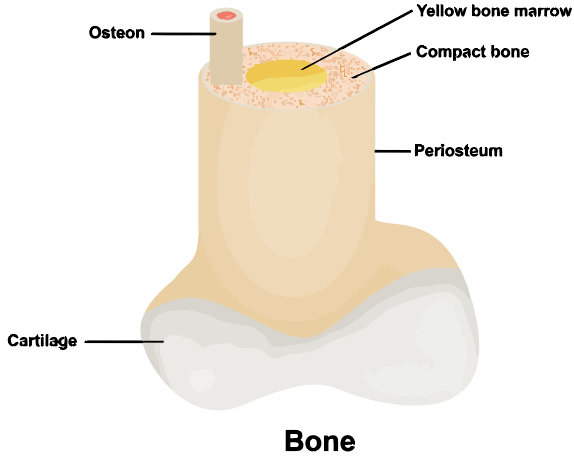
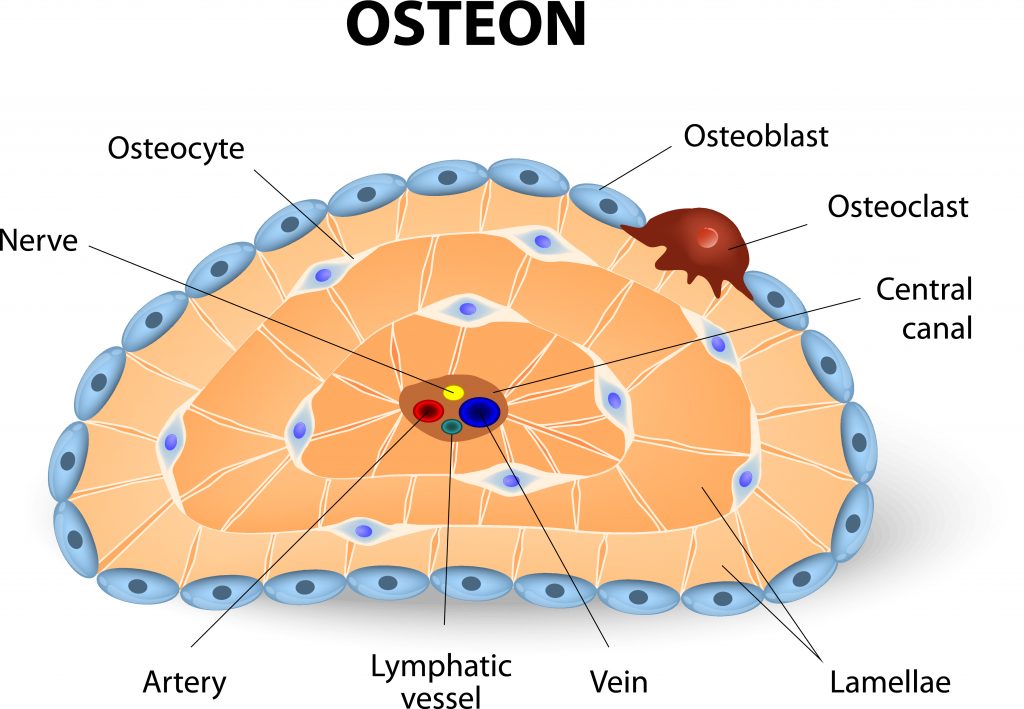

Let’s Review
- The skeletal system provides structural support and protection, aids in movement, serves as a mineral reservoir, and helps produce cells.
- The appendicular skeleton consists of the upper and lower extremities.
- The axial skeleton consists of the skull, sternum, ribcage, and vertebral column.
- The five bone types in the human body are: long, short, flat, irregular, and sesamoid.
- Ossification is a bone-forming process typically performed in childhood.
- Bone remodeling is a process that involves replacing old, mature bone tissue with new bone.
- Osteons are bone cells found in compact bone that contain the Haversian canal, which is the site for blood vessels and nerve fibers.
- Osteoblasts are bone-forming cells, and osteoclasts are bone-dissolving or resorbing cells.
- Osteocytes are bone cells found deep within bone that produce substances like cartilage.
Skeletal System Flashcards
Subscribe to the online course to gain access to the full lesson content.
If your not ready for a subscription yet, be sure to check out our free practice tests and sample lesson at this link

